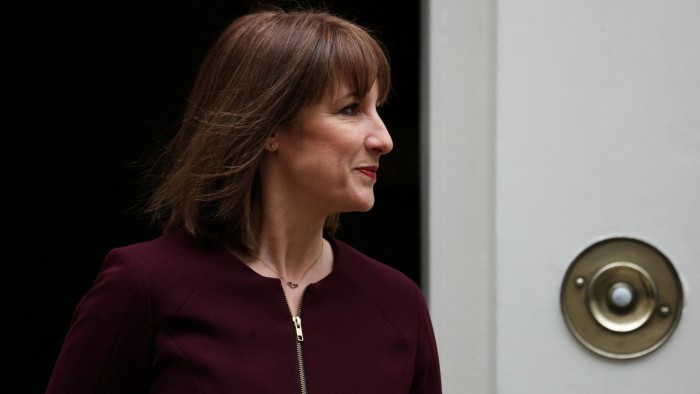Unlock the Editor’s Digest for free
Roula Khalaf, Editor of the FT, selects her favourite stories in this weekly newsletter.
Rachel Reeves has been accused of leaving her fiscal policy on a “precarious” footing as market movements exposed how easily her budget headroom could evaporate again if borrowing costs go higher.
The UK chancellor on Wednesday rebuilt her fiscal buffer, largely with spending cuts, to the same narrow £9.9bn margin that she constructed at her tax raising October Budget.
Investors criticised Reeves’ decision to stick with such a modest surplus against her key fiscal rule to fund day-to-day spending with tax receipts by 2029-30 given she acknowledged the Treasury is in “a more uncertain world”.
If the Office for Budget Responsibility’s forecast had incorporated the government’s cost of borrowing as of Thursday, Reeves’ headroom would be even smaller still, just £6.5bn according to Capital Economics.
“This a precarious situation,” said Hetal Mehta, head of economic research at wealth manager St James’s Place. “It’s not going to stop speculation all the way up to the next Budget.”
Reeves, in office since July, was forced into a fiscal consolidation this week because an increase in gilt yields removed the fiscal buffer she created in her Budget in October, when she raised taxes by £40bn and spent it on public services.
The OBR on Wednesday questioned her decision to return to the same £9.9bn headroom she chose in October, saying it is “a very small margin compared to the risks and uncertainty inherent in any fiscal forecast”.
In particular, a downgrade to the OBR’s productivity assumptions, or a severe worsening in Donald Trump’s trade war, could quickly erase Reeves’ headroom, according to the watchdog.
Hours after Reeves finished her Spring Statement, US President Donald Trump announced he would impose a 25 per cent tariff on imported cars from countries including the UK.
Paul Johnson, head of the Institute for Fiscal Studies, a think-tank, said on Thursday the chancellor was managing the headroom “to an absurd degree of precision”.
Detailed tables from the OBR showed a difference of just £2.26mn between the new figure and the reading in the October Budget — in the context of a government that is expected to spend £1.28tn in the current fiscal year.
Johnson added: “Despite this oh-so-careful maintenance of the fiscal headroom, the worry for Ms Reeves is that the headroom remains very small indeed. There is a good chance that the economic and fiscal forecasts will deteriorate significantly between now and an autumn Budget.”
Mehta said the number appeared to have been “reverse-engineered to be exactly the same as last time”.
Gilts underperformed other big markets on Thursday, with the 10-year yield reaching as high as 4.81 per cent as the price of the debt fell.
That put the UK’s borrowing costs at their highest since the January sell-off, when they reached a 16-year high.
Investors said that the positive reaction on Wednesday to a lower-than-expected debt issuance forecast from the Debt Management Office had been replaced by renewed concern over the chancellor’s small margin for manoeuvre against her self-imposed fiscal rules.
“The market is focusing again on the fact that the chancellor hasn’t left herself much fiscal headroom,” said Nicolas Trindade, a senior portfolio manager at Axa’s investment management arm.
Reeves’ fiscal position has been helped by the OBR’s expectation that UK economic growth will rebound by 1.9 per cent next year and 1.8 per cent in 2027, after it slashed forecasts for 2025 to just 1 per cent.
But Trindade said the OBR’s expectations on GDP were “overly optimistic and when they most likely get downgraded once again in October, there is a risk that the fiscal headroom is gone again, particularly if gilts remain at current levels”.
The forecast of a current budget surplus in 2029-30 is also partly anchored on reductions to departmental spending that are backloaded to the end of the parliament, alongside welfare cuts that have provoked anxiety among Labour MPs.
It is “likely to be a rough few months ahead”, said Nuwan Goonetilleke, head of capital markets at insurer Phoenix Group. “The handcuffs of fiscal headroom continue to bind tightly, leaving the chancellor very much subject to fortune.”
A Treasury spokesperson said: “The chancellor has always been clear the fiscal rules are non-negotiable, and the OBR has confirmed that the government is on track to meet them with a fiscal headroom of £9.9bn.
“It is the responsible choice to reduce our levels of borrowing in the years ahead, so we can spend more on our public services, more on the priorities of working people and less on servicing debt.”







